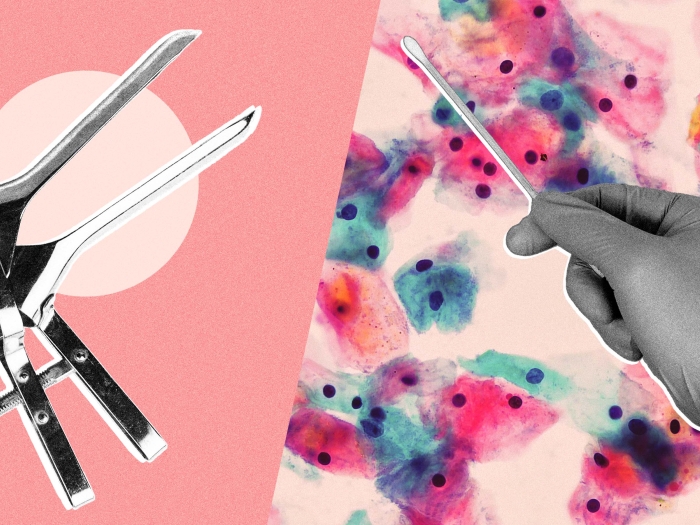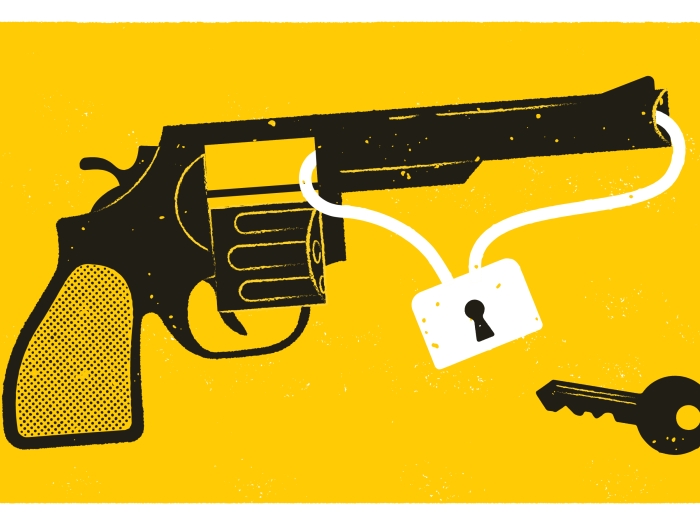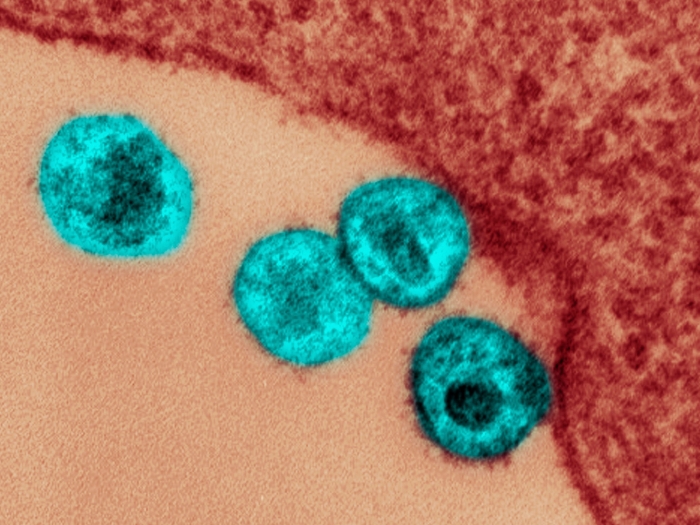An updated guide to testing, quarantining, isolating and returning to work or school, depending on whether you’ve gotten vaccinated fully, partly or not at all, and your own history with COVID.
11:00 AM
Author |

Updated December 29, 2021.
Editor's note: Information on the COVID-19 crisis is constantly changing. For the latest numbers and updates, keep checking the CDC's website. For the most up-to-date information from Michigan Medicine, visit the hospital's Coronavirus (COVID-19) webpage.
Remember those "Choose Your Own Adventure" books from grade school?
The ones where you turned to a different page, depending on what you wanted a book character to do?
If you find out you or your child has been around someone who has COVID-19, or has tested positive or has symptoms, you might feel like you're living in one of those books.
What should you do next?
And unlike the books, there's a lot more at stake if you make the wrong choice. Plus, you can't turn back to the page you started on.
So, here's a simple Choose Your Own Adventure-style guide to get you through the current surge in cases, and the next few months, safely.
For full details, follow the Choose Your Own Adventure text below.
Wait! This guide doesn't agree with what I was told before.
That's right! Experts have learned a lot in the past two years about this coronavirus, how it spreads and who's most likely to get sick or spread it to others. And more people are getting vaccinated, which protects them from serious illness and death if they get infected.
The guidance has also changed to reflect the more infectious nature of the Delta and Omicron variants, which are more likely to lead to infection in vaccinated people. While those infections may not cause the vaccinated person to get seriously ill, especially if they've received a booster dose of vaccine, they could still transmit the virus to others who are more vulnerable.
So the rules about who needs to do what, after they get exposed to a person with COVID-19 or test positive, have changed multiple times. The most recent change was announced in late December.
And the rules apply to children and teens as well as adults. Younger people may not be as likely to get seriously sick, but they can still spread the virus. So where we say "you" below, you can also substitute "your child or teen."
Note: The guidance below is based on the Centers for Disease Control and Prevention guidance, but employers, schools, counties and states can have their own standards for quarantine and isolation that are more protective. If you're not sure which guidance to follow for work, your child's school or the place you live, look for information online or ask.
Start here:
Scenario 1: You find out that you were exposed to someone who has COVID-19 symptoms, or who tested positive for coronavirus even if they don't have symptoms.
-
What counts as an exposure or close contact? A general rule of thumb (and the national definition for non-school situations) is you were within six feet of someone with COVID-19 for 15 minutes or more. In schools, if all students are wearing good-fitting masks and are in a classroom, the formal definition is any distance greater than three feet. Even within the formal definition, the chance of infection is generally highest if you're unmasked in an indoor setting, followed by unmasked outdoor settings, masked indoor settings and masked outdoor settings. Other factors like time, distance apart, and level of activity such as shouting, singing or exercising also make a difference.
-
What counts as the contagious period? It starts two days before a person's symptoms began. Or, if they have no symptoms, it started two days before the day they got tested, if their lab test (called a PCR test) was positive. The most infectious days last through the end of the fifth day after their symptoms started, and the 6th through 10th days are considered less likely to be contagious, unless they still have a fever. In that case, they're still contagious until the fever has been gone at least 24 hours, without fever-reducing drugs.
-
If this scenario describes you, and you have no symptoms right now, scroll down to start your "adventure." What you should do now depends on your vaccination status. That's because research has shown the power of vaccination to reduce the amount of time someone is highly contagious.
-
No matter what your vaccination status, tell the person at your school or work who tracks COVID-19 exposures that you had an exposure. Also tell the people you live with, and anyone you were around in the past few days, that you had an exposure. They don't have to get tested or quarantine if you test negative and stay symptom-free. But if you test positive or develop symptoms, then they need to follow this guide, too.
-
If you live with someone who is at high risk of serious COVID-19: Stay distant from them, and wear a mask at home.
Scenario 2: You have symptoms that could be COVID-19, or you test positive on a rapid test or PCR test.
-
STAY HOME. Your "adventure" MUST include time in isolation to protect others, even if you're vaccinated, under the new national guidance.
-
SKIP DOWN to Adventure 3 to find out what that means, what you should do, and when you can get out of isolation.
Choose an adventure based on your vaccination status:
Adventure 1: You're fully vaccinated and boosted, or it's too soon for your booster.
If one of these describes you or your child:
-
You got your booster shot already
-
You got your second dose of Pfizer or Moderna vaccine less than 6 months ago or your dose of Johnson & Johnson vaccine less than 2 months ago
Then you/your child should:
-
Wear a mask around other people, including people you live with, and in all public places, for 10 days. Make sure the mask fits snugly without gaps.
-
Five days after your exposure to the sick or COVID-positive person, get tested using a rapid home test, or go out to get a PCR test. Don't get tested sooner than this – you may get a false negative.
-
You do not have to stay home in quarantine IF AND ONLY IF you remain symptom-free and your Day 5 test comes back negative. However, you may want to do a rapid test at the end of 10 days just to be sure.
-
STAY HOME if you develop symptoms and skip to Adventure 3 to find out what to do.
-
STAY HOME if you test positive and skip to Adventure 3 to find out what to do.
You should also report your exposure, and your test result, to your school or work, and to people you live with or were near recently.
If you develop symptoms or test positive at any time, anyone you were near in the two days before you took your test or started having symptoms now needs to follow the post-exposure guidance too. They should follow the guidance based on their vaccination status.
You can now skip to "The final chapter" below!
Adventure 2: You were exposed and you aren't fully vaccinated, or your vaccination was a while ago and you haven't gotten boosted yet.
If one of these three describes you or your child:
-
You haven't gotten any doses of vaccine.
-
You got just one dose of Pfizer or Moderna.
-
You haven't gotten a booster dose yet but you got your second dose of Pfizer or Moderna vaccine more than 6 months ago or your dose of Johnson & Johnson vaccine more than 2 months ago.
Then you/your child should:
-
Stay home for five days, wearing a mask around others you live with.
-
Five days after your exposure to the sick or COVID-positive person, get tested using a rapid home test, or go out to get a PCR test. (Wear a mask when you go!) Don't get tested sooner than this – you may get a false negative.
-
After five days, you do not have to stay home in quarantine IF AND ONLY IF you remain symptom-free and your Day 5 test comes back negative. But when you go out, you must wear a mask at all times for five days. Make sure the mask fits snugly without gaps.
-
If you absolutely can't stay home for five days, wear a mask if you go out, for a total of 10 days of wearing a mask around others.
-
You may want to do a rapid test at the end of 10 days just to be sure.
-
STAY HOME if you develop symptoms and skip to Adventure 3 to find out what to do.
-
STAY HOME if you test positive and skip to Adventure 3 to find out what to do.
You should also report your exposure, and your test result, to your school or work, and to people you live with or were near recently.
If you develop symptoms or test positive at any time, anyone you were near in the two days before you took your test or started having symptoms now needs to follow the post-exposure guidance for people with their vaccination status.
Adventure 3: Your COVID test comes back positive or you develop symptoms.
-
If you've got symptoms or you've tested positive on either a lab (PCR) test or a rapid test, you MUST stay home for at least five days, no matter what your vaccination status.
During this time, you should go into isolation. This means:
-
staying home in a separate room with the door closed
-
avoiding others, even the people you live with, and having no in-person visitors
-
wearing a mask to use the bathroom
-
having people leave you food, drink and medicine at your bedroom door
-
clearing the air with an open window and/or filters
-
treating any symptoms you might have, such as fever and pain
-
seeking medical care if any of your symptoms become serious
See more tips for you and the people you live with here.
-
If you have a fever, you MUST stay in isolation until the fever goes away without the aid of fever-reducing medicine. This may be longer than five days.
-
If you tested positive but didn't develop symptoms within five days of the test, you can leave your house IN A MASK but you must wear a mask around others for the next five days. That will bring you to the end of the 10-day contagious period. You may want to take a rapid test at 10 days, just to be sure.
-
If you had symptoms but they've eased up after five days, and any fever you had is gone without taking medication, you can leave your house IN A MASK but you must wear a mask around others for the next five days. That will bring you to the end of the 10-day contagious period. You may want to take a rapid test just to be sure.
You might have some lingering symptoms like a reduced sense of taste or smell, but you are not likely to be contagious unless you have a compromised immune system.
You should still monitor yourself for symptoms until 14 days, and go back into isolation if they come back.
MORE FROM MICHIGAN: Sign up for our weekly newsletter
Now, choose which one of these situations applies to you, to find out what happens next:
-
If you're fully vaccinated and boosted: Thank science that you probably just had a much milder case than you would have if you hadn't been vaccinated. Encourage others to get vaccinated.
-
If you're partially vaccinated or haven't gotten a booster shot yet: Wait until your contagious period is over (and symptoms are gone if you had any) until you go get that second dose of a two-dose vaccine or a booster shot, which is currently available to anyone over age 16 after a certain time has passed from their initial vaccination(s). If you already had an appointment, you may need to delay it. Just make sure you get it soon.
-
If you haven't started the vaccination process, now's the time. Schedule your appointment for a week or two after your contagious period ends.
-
If you weren't planning to get vaccinated, please consider doing it after all. Wait until your contagious period is over and then start the process. Talk to your doctor or a trusted medical professional if you have questions. Be wary of negative claims on social media.
-
If the person who tested positive or had symptoms is under age 5: Vaccination isn't authorized for this age group yet, but once it is, it's important to get vaccinated, even after having COVID.
Keep reading for the final chapter.
The final chapter: Life after a COVID case or exposure
No matter what your test result, vaccination status or COVID history, you should follow the latest mask-wearing guidance for the places you want to go.
If you are traveling, taking part in sports or large events, preparing for a medical procedure, or working or attending school in person, you may be required to show proof of vaccination or a recent negative PCR test, or to take rapid antigen tests once or multiple times.
When used in people without symptoms or recent exposures, rapid test screening tests give results in minutes and are useful for spotting undiscovered cases. But they are also more prone to giving "false negatives" if someone has just gotten infected. So, getting a negative result on one of them does not give you a "free pass" to stop paying attention to COVID precautions. If two swabs come with the kit you buy or are given, follow the instructions for using them a day or two apart.
If you test negative on a rapid test, but you then develop symptoms or find out that you had an exposure to a contagious person, you should get a lab test (PCR) and follow the scenario above for your vaccination status until get your results.
If you test positive on an antigen test, immediately follow up by having a lab test (PCR) if you can. Then follow the guidance for your vaccination status until you get the results.
The less the virus spreads, the less chance it will have to sicken and kill people, to mutate, and to prompt new limits on schools, activities and businesses.
Public health experts will tell us when we can ease up on these practices, based on vaccination rates and case counts.
Because that's the only way we're going to close the book on COVID-19.
The expertise on this article was provided by Emily Somers, Ph.D., and Jonathan Golob, M.D., Ph.D.

Explore a variety of healthcare news & stories by visiting the Health Lab home page for more articles.

Department of Communication at Michigan Medicine
Want top health & research news weekly? Sign up for Health Lab’s newsletters today!






